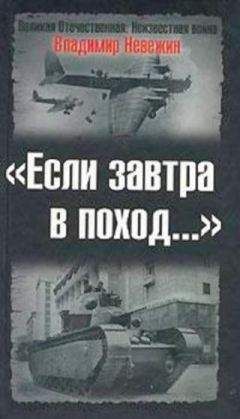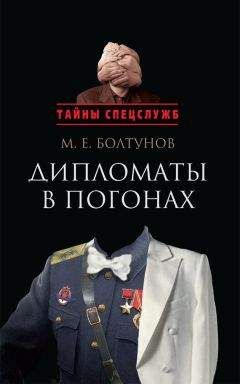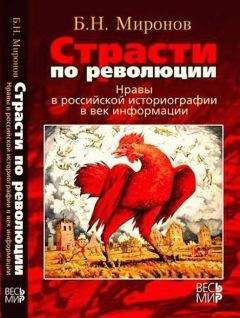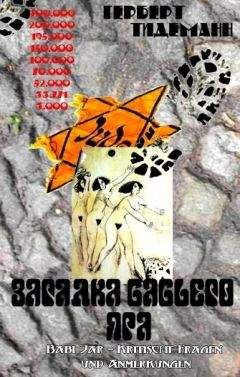Михаил Мочалов - Древняя Ассирия
Соловьева С. С. Великая Ассирийская военная держава в I тысячелетии до н. э. // История Древнего Востока. — М., 1999.
Соловьева С. С. Война 663 г. до н.э. между Ассирией и Кушем за господство над Египтом // Мероэ (Вып. 1). — М., 1997.
Соловьева С. С., Немировский А. А. Месопотамия во II тысячелетии до н. э. Преобладание Вавилона // История Древнего Востока. — М., 1999.
Тантлевский И. Р. История Израиля и Иудеи до разрушения первого храма. — СПб., 2007.
Фоссе Ш. Ассирийская магия. — СПб., 2001.
Херцог Х. Библейские сражения. — М., 2005.
Храпачевский Р. П. Военная держава Чингисхана. — М., 2004.
Энглим С., Джестис Ф. Дж., Райс Р. С., Раш С. М., Серрати Д. Войны и сражения Древнего мира. — М., 2004.
Яйленко В. П. Архаическая Греция и Ближний Восток. — М., 1990.
Якобсон В. А. Лекция 2. Новоассирийская держава / История Древнего мира. — М., 1989.
Янковская Н. Б. Лекция 10. Раздел 3. Митанни и Аррапха / История Древнего мира. — М., 1982.
Akkermans P. M. M. G., Limpens J. and Spoor R. Н. On the frontier of Assyria: excavations at Tell Sabi Abyad, 1991 // AKKADICA, 84-85.
Anspacher A. S. Tiglath-Pileser III / Contributions to Oriental History and Philology, №5, N-Y., 1912.
Art of The First Cities: The Third Millenium BC from the Mediterranean to the Indus / Ed. by Joan Aruz. The Metropolitan Museum of Art, New York Yale University Press, New Haven and London.
Baker H. D. Šamši-ilu / Reallexikon der Assyriologie 11/7-8: 639-40.
Barron A. E. Late Assyrian Arms and Armour: Art Versus Artifact. A thesis submitted in conformity with the requirements for the degree of Doctor of Philosophy in the Graduate Department of Near and Middle Eastern Civilizations at the University of Toronto, Toronto, 2010.
Bedford P. Empires and Exploitation: The Neo-Assyrian Empire. WA Perth, 2001
Bryce T. R. Hittite Warrior. (Warrior 120). Osprey Publishing Ltd, 2007.
Buttery A. Armies and Enemies of Ancient Egypt and Assyria: 3200 BC to 612 BC (A War Games Research Group Publication). 1974.
Coulston J. Imperial Roman Warfare // The Ancient World at War. A Global History. Thames & Hudson Ltd, London, 2008.
Dailey S. Mari and Karana. Two Old Babylonian Cities. Longman Group Limited, 1984.
Davey C. J. The Negūb Tunnel // Iraq XLVII, 1985.
Dawson D. The First Armies / Gen. Editor: John Keegan. Cassel &Co, 2001.
De Graeve M.-C. The Ships of The Ancient Near East (c. 2000-500 B.C.). OLA, Vol. 7. Departement Oriëntalistiek, 1981.
Drower M.S. Syria c. 1550-1400 BC. Warfare and society / The Camdridge Ancient History, II. Part I, The Middle East and the Aegean Region, c. 1800-1380 BC.
Dubovsky P. Tiglath-pileser III’s Campaigns in 734-732 B.C.: Historical Background of Isa 7; 2 Kgs 15-16 and 2 Chr 27-28. http://www.biblicalstudies.ru/OT/Dubovsky.pdf
Faist B. An Elamite Deportee // Homeland and Exile. Biblical and Ancient Near Eastern Studies in Honour of Bustenay Oded, Leiden/Boston, Vetus Testamentum Supplement 130, 2009.
Fales F. M. Grain Reserves, Daily Rations, and The Size of The Assyrian Army: a Quantitative Study / State Archives of Assyria Bulletin (SAAB) IV.
Fales F. M. The Assyrian Words for «(Foot) Soldier» / Homeland and Exile: Biblical and Ancient Near Eastern Studies in Honour of Bustenay Oded. Eds. G. Galil, M. Geller and A. Millard. Brill, 2010.
Fantalkin A., Tal O. Navigating Between the Powers. Joppa and Its Vicinity in the 1st Millennium B. C. E. // Sonderdruck aus Ugarit-Forschungen. Internationales Jahrbuch für die Altertumskunde Syrien-Palästinas, Band 40, 2008.
Fields N., Delf B. Bronze Age War Chariots (New Vanguard, 119). 2006. Osprey Publishing.
Frame G. Babylonia 689-627 BC: a political history. Nederlands Historisch-Archaeologisch Institut te Istanbul, 1992.
Frame G. The Tell Achameh Stela of Sargon II of Assyria // Subartu, XVIII.
Gabriel R. A. The military history of ancient Israel. Praeger Publishers. 2003.
Galil G. Review: Fales F. M. Guerre et paix en Assyrie: Religion et impérialisme/Les Conférences de l’École Pratique des Hautes Études.
Hamblin W. J. Warfare in The Ancient Near East to 1600 BC: Holy Warriors at The Dawn of History. Routledge, 2006.
Harrison T. P. The Neo-Assyrian Governor’s Residence At Tell Ta‘yinat. C. S. M. S. Bulletin 40.
Healy M. The Ancient Assyrians (Elite 39). Osprey Publishing Ltd.
Jacobsen T., Lloyd S. Sennacherib’s Aqueduct at Jerwan / The University of Chicago. Oriental Institute Publications, Vol. XXIV. Chicago, Illinois, 1935.
Kahn D. Taharqa, King of Kush and the Assyrians // JSSEA 31 (2004).
Kelle B. E. Ancient Israel at War: 853-586 BC (Essential Histories 67). Osprey Publishing Ltd, 2007.
Lanfranchi G. B. Consensus to Empire: Some Aspects of Sargon II’s Foreign Policy/ Assyrien im Wandel der Zeiten. XXXIXe Recontre Assyriologique Internationale. Heidelberg 6-10 Juli 1992. Heidelberger Orientverlag. 1997.
Layard A. H. A Popular Account of Discoveries at Nineveh. New York. 1854. http://www.aina.org/books/dan. htm
Mac Ginnis J., Matney T. Ziyaret Tepe. Digging the frontier of the Assyrian Empire // Current World Archaeology. Issue 37.
Mallowan M. E. L. Assyria and Mesopotamia / The Cambridge Ancient History. 3-rd edition, Vol. 1, Part 2: Early History of The Middle East.
Mattila R. The King’s Magnates: A Study of the Highest Officials of the Neo-Assyrian Empire (SAAS XI).
Miglus P. A. Die letzten Tage von Assur und die Zeit danach // ISIMU, 2000, Vol. 3. S. 85-99.
Moorey P. R. S. Ancient Mesopotamian Materials and Industries: The Archaeological Evidence. Clarendon Press, Oxford, 1994.
Nadali D. The Representation of Foreign Soldiers and Their Employment In The Assyrian Army // Ethnicity In Ancient Mesopotamia. Nederlands Instituut Voor Het Nabije Oosten, 2005.
Noble D. Assyrian Chariotry and Cavalry // SAAB IV. 1.
Olmstead A. T. E. Assyrian Historiography. A Source Study. The University Of Missouri Studies. Social Science Series, Volume III, Number 1, 1916 / Assyrian International News Agency. Books Online. http://www.aina.org/books/ ah.htm
Parker, Bradley J. At the edge of empire: conceptualizing Assyria’s Anatolian Frontier ca. 700 BC // Journal of Anthropological Archaeology 21 (2002) 371-395.
Parker, Bradley J. Garrisoning the empire: Aspects of the Construction and Maintenance of Forts on the Assyrian Frontier / Iraq. Vol. 59 (1997).
Parpola S. The Construction of Dur-Šarrukin in the Assyrian Royal Correspondence // Khorsabad, le palais de Sargon II, roi d’Assyrie. Actes du colloque organisé au musée du Louvre par le Service culturel les 21 et 22 janvier 1994.
Parpola S. National and Ethnic Identity in the Neo-Assyrian Empire and Assyrian Identity in Post-Empire Times // Journal of Assyrian Academic Studies, Vol. 18, no. 2, 2004.
Parpola Simo. The Man Without a Scribe and the Question of Literacy in the Assyrian Empire // Alter Orient und Altes Testament, 247.
Paulissian R. Medicine in Ancient Assyria and Babylonia // Journal of Assyrian Academic Studies (JAAS). Vol. V, № 1, 1991.
Pinker A. Nahum and the Greek Tradition on Nineveh’s Fall // The Journal of Hebrew Scriptures. Vol. 6, article 8.
Postgate J. N. Assyrian Uniforms // Veenhof Anniversary Volume. Studies Presented to Klaas R. Veenhof on The Ocassion of His Sixty-Fifth Birthday. Nederlands Instituut Voor Het Nabije Oosten. 2001.
Postgate N. The Land of Assur and the Yoke of Assur: Studies on Assyria 1971-2005. 2007. Oxbow Books.
Potts D.T. The Archaeology of Elam. Formation and Transformation of an Ancient Iranian State. Cambridge World Archaeology. Cambridge University Press, 1999.
Radner K. The Assyrian army, Assyrian empire builders. University College London, 2009. URL: http://www.ucl.ac.uk/history2/sargon/essentials/soldiers/theassyrianarmy.
Radner K. The stele of Sargon II of Assyria at Kition: A focus for an emerging Cypriot identity? // Interkulturalität in der Alten Welt. Vorderasien, Hellas, Ägypten und die vielfältigen Ebenen des Kontakts. Harrasowitz Verlag, Wiesbaden, 2010. P. 429-449.
Radner K. The trials of Esarhaddon: The conspiracy of 670 BC. ISIMU, Vol. 6, 2003.
Saggs, H. W. F. The might that was Assyria. London: Sadgwick & Jackson. 1984.
Shibata D. Middle Assyrian Administrative and Legal Texts from the 2005 Excavation at Tell Taban: A Preliminary Report // AL-RAFIDAN Vol. XXVIII. 2007.
Starr I. Queries to the Sun God. Divination and Politics in Sargonid Assyria / State Archives of Assyria (SAA). Vol. IV. Helsinki University Press.
Stillman N., Tallis N. Armies of the Ancient Near East, 3000 BC to 539 BC, Wargames Research Group, Worthing. 1984.
Szuchman J. Bit Zamani and Assyria / Syria: Revue d’art oriental et d’archéologie 86 (2009): 55—65.
Tadmor H. On the role of Aramaic in the Assyrian Empire. http://www.aramaic-dem.org/English/History/... pdf.
Tallis N. Ancient Near Eastern Warfare // The Ancient World at War. A Global History. Thames & Hudson Ltd, London, 2008.
The Assyrian Dictionary of the Oriental Institute of the University of Chicago / Ed.: Roth M. T., Biggs R. D., Brinkman J. A., Civil M., Farber W., Reiner Е., Stolper M. W. (CAD), http://oi.uchicago.edu/research/pubs/ catalog/cad/.
Grayson A. K. Assyria: Ashur-dan II to Ashur-nirari V (934—745 В. C.) / The Cambridge Ancient History. 2-nd edition, Vol. III. Part 1. The Prehistory of the Balkans, the Middle East and the Aegean World. Tenth to Eighth Centuries BC. 1982.
Grayson A. K. Assyrian Civilization / The Cambridge Ancieny History. Vol. III. Part 2. The Assyrian and Babylonian Empires and Other States of the Near East. From the Eighth to the Sixth Centuries BC. 1992.
The Correspondence of Sargon II. Part I. Letters from Assyria and The West / Ed. by Simo Parpola. Helsinki University Press. 1987.
The Correspondence of Sargon II. Part II. Letters from The Northern and Northeastern Provinces / Ed.by Giovanni B. Lanfranchi and Simo Parpola. Helsinki University Press. 1990.
The Correspondence of Sargon II. Part III. Letters from Babylonia and The Eastern Provinces / Ed. by Andreas Fuchs and Simo Parpola. Helsinki University Press. 2001.
The Prosopography of the Neo-Assyrian Empire. Vol. 1, Part I: A. Ed. by Karen Radner. Helsinki, 1998.
Ussishkin D. The “Lachish Reliefs” and the City of Lachish // Israel Exploration Journal, Vol. 30, 1980.
Wilkinson T. J., Wilkinson E. B., Ur J., Altaweel M. Landscape and Settlement in the Neo-Assyrian Empire // Bulletin of the American Schools of Oriental Research, № 340 (Nov., 2005).
Wise T. Ancient Armies of the Middle East (Men-at-Arms 109). Osprey Publishing Ltd.
Wright E. M. The Eigth Campaign of Sargon II of Assyria (714 В. C.) // Journal of Near Eastern Studies (JNES). Vol. 2, №3 (Jul., 1943).
Zawadzki S. The Revolt of 746 В. C. and The Coming of Tiglath-Pileser III to The Throne. SAAB 8.1(1994).
Примечания
1
1. О шумерском влиянии говорят руины храма Иштар в Ашшуре и найденные там вотивные предметы, раскопанные немецким археологом Андрэ (Mallowan М. Е. L. Assyria and Mesopotamia... P. 298-301).
2
2. Saggs H. W. F. The might that was Assyria. P. 21
3
3. Ашшурская община входила, очевидно, в одну из провинций Аккадской державы. Милитаризованное государство Саргона Древнего было своего рода «предтечей» Новоассирийской империи в плане административного устройства и централизации власти, да и по размаху оно было ей соразмерно. (См.: Бухарин М. Д., Ладынин И. А., Ляпустин Б. С., Немировский А. А. История Древнего Востока. С. 224-226.)
4
4. Здесь и далее — даты до новой эры.
5
5. История Древнего Востока: Зарождение древнейших классовых обществ... Часть II.
6
6. Моогеу Р. R. S. Ancient Mesopotamian Materials and Industries... P. 288.
7
7. Лессёэ Й. Древние ассирийцы... С. 107.
8
8. Всемирная история. С. 85, 282.
9
9. История Древнего Востока: Зарождение древнейших классовых обществ... Часть I. C. 362.
10
10. Ишме-Даган — аккад. «бог Даган услышал (меня)»; Ясмах-Адад — амор. «бог Адад услышал (меня)». Если в Ашшуре и Экаллатуме царские имена писались в соответствии с аккадско-вавилонской традицией, то на западе, в Мари, Ясмах-Адад пользовался аморейской формой своего имени. Вероятно, среди прочих причин ему было важно таким образом продемонстрировать близость к местному населению.




